17 Nights / 18 Days

Meeting and assistance on arrival at New Delhi airport a transfer to Hotel. On arrival check in to hotel. Afternoon: Visit New Delhi, seeing the Qutab Minar, a tower of victory built in the 12th century and India Gate - the war memorial. Drive past the Rashtrapathi Bhawan, the residence of the President of India, the houses of Parliament and the Government Secretariat buildings. Overnight in New Delhi.
Morning after breakfast city tour of Old Delhito see the historic Red Fort and the Jama Masjid, India’s largest mosque from the outside. See the colourful bazaar of Chandni Chowk and take a cycle rickshaw ride through the back streets of Old Delhi to get a first hand experience of the hustle and bustle of this traditional city. This ride through the small by-lanes will be most fascinating. Return to the hotel for lunch or eat at an interesting restaurant in town. After noon board 2nd A/C Sleeper Class train to Ranthambhore at 1810 hrs. Meeting and assistance on arrival at Sawaimadhopur railway station and transfer to Resort. Dinner and overnight at resort.
Breakfast, Lunch and Dinner at the lodge. Morning and afternoon visit the sanctuary with an English-speaking Naturalist. During the day visit the famous Ranthambhore Fort.
Ranthambore:
With an area of 400 sq. km encompassing rocky hill crests which descend to open valleys between the Aravalli and Vindhya ranges, dotted with water pools and fruit trees, this park gets its name from the thousand year old fortress, which looms above the forest. Well known for the diurnal activity of tigers, Ranthambore is a very special and unusual area where a natural present meets a historical past. Sambar, cheetal, chinkara, nilgai and languor. The elusive leopard and tigers are found in this reserve with tourists standing a very good chance of seeing tigers during the day. Dotted across the landscape are the crumbling ruins of its past glory, be it chatris or cupolas, like palaces or old guard posts, all of which reinforce the magical and ethereal quality of this great wilderness.
Breakfast, Lunch and Dinner at the lodge. Morning and afternoon visit the sanctuary with an English-speaking Naturalist. During the day visit the famous Ranthambhore Fort.
Ranthambore:
With an area of 400 sq. km encompassing rocky hill crests which descend to open valleys between the Aravalli and Vindhya ranges, dotted with water pools and fruit trees, this park gets its name from the thousand year old fortress, which looms above the forest. Well known for the diurnal activity of tigers, Ranthambore is a very special and unusual area where a natural present meets a historical past. Sambar, cheetal, chinkara, nilgai and languor. The elusive leopard and tigers are found in this reserve with tourists standing a very good chance of seeing tigers during the day. Dotted across the landscape are the crumbling ruins of its past glory, be it chatris or cupolas, like palaces or old guard posts, all of which reinforce the magical and ethereal quality of this great wilderness.
Morning game drive to national park and after breakfast carry packed lunch and drive to Jaipur 180 kms. On arrival check into Hotel.
Jaipur - the capital of Rajasthan, is colour washed pink - the colour associated with hospitality in Rajput culture. This Pink City of fairy tale palaces, rugged fortresses perched on barren hills and broad avenues, is picturesque. The first planned city of its time, Jaipur is encircled by a formidable wall. Overnight in Jaipur.
Morning proceed on an excursion to Amber Fort with an Elephant ride upto the top of the Fort. Drive past Hawa Mahal, known popularly as the Palace of Winds, is a facade built for the Ladies of the Royal household in the 19th century. The Amber Fort, the capital of the erstwhile State of Jaipur until 1728 is perched on a hill. It has halls of Public and Private audience, a Sheesh Mahal (hall of mirrors) various marble palaces which are marvelous examples of ancient Rajput architecture. The Temple of Amba (Mother Goddess), the patron deity of the Royal family is at the entrance to the palace. Ride an elephant to ascend the hill on which the Fort is situated.
Return to the town in the afternoon enroute visiting the City Palace - the former royal residence built in a blend of Rajasthani and Mughal styles which houses a museum with a superb collection of Rajasthani costumes and armoury of the Mughals and Rajputs, including swords of different shapes and sizes with ornate handles. It has an art gallery with an excellent collection of miniature paintings, carpets, royal paraphernalia and rare astronomical works in Arabic, Persian, Latin and Sanskrit. Also visit the Jantar Mantar - an astrological and astronomical observatory built by Maharaja Jai Singh in the 18th century, which is remarkable for its accuracy even in the present times. Overnight in Jaipur.
After Breakfast drive to Agra (235 km / 5 hrs ) Stop for Lunch at The Bagh, Bharatpur and after lunch drive to Agra, 55kms, on route visit Fatehpur Sikri - This exquisite city built by Akbar the Great in 1569, in red sandstone, with its forts, palaces and mosques was abandoned 14 years after its creation due to political reasons. The Diwan-i-am - a vast courtyard in which the emperor gave daily public audience; Diwan-i-khas - a large quadrangle which contained all the major functions of the Palace, Pachisi court, the Emperors private living quarter, Jodha Bhai’s Palace, Mariam’s Palace, Birbal’s Palace, Hawa Mahal and Panch Mahal are some of the important buildings of this residential complex. The Friday Mosque and the exquisite tomb of Sheik Salim Chisti are in the religious grounds set aside in a separate enclosure adjacent to the secular buildings.
Continue drive to Agra after visiting Fatehpur Sikri (49 kms). On arrival, check in to the Hotel.
Agra is famous as the home to one of the Seven Wonders of the World - the Taj Mahal. The architectural splendour of the mausoleums, the fort and the palaces in Agra is a vivid reminder of the opulence of the legendary Mughal Empire. Agra was their capital for nearly a hundred years from 1564. A pleasant town, with a comparatively easy pace, Agra is known for its superb inlay work on marble and soapstone by artisans who are hereditary crafts persons. The city is also famous for its carpets, gold thread embroidery and leather shoes. Overnight in Agra.
Morning : Proceed on a city tour of Agra. Visit the Agra Fort, built by three Mughal Emperors starting from Akbar the Great in 1565 AD, which is a masterpiece of design and construction. Within the fort are a number of exquisite buildings including the Moti Masjid, Jahangir’s Palace, Khas Mahal and the Sheesh Mahal, Diwane-i-Am, Diwane-i-Khas and Musamman Burj, where Emperor Shah Jahan, the fifth Mughal Emperor, died a prisoner. Later visit the Taj Mahal - the inimitable poem in white marble. Built over a period of 22 years, by the Mughal Emperor Shah Jahan in 1630, for his Queen Mumtaz Mahal to enshrine her mortal remains, it is one of the seven modern wonders of the World.
Evening take an 2nd A/C sleeper class overnight train to Umaria at 1715 hrs. Packed dinner provided.
Meeting and assistance on arrival at Umaria railway station at 0615 hrs and transfer to Bandhavgarh National Park. On arrival check in to Tiger’s Den Resort. Breakfast and Lunch at resort and afternoon game drive to the Park. Dinner and overnight in Bandhavgarh.
Breakfast, Lunch & Dinner at resort. Morning & Evening Jeep drive in the park.
Bandhavgarh has been a center of human activity and settlement for over 2000 years, and there are references to it in the ancient books, the Narad-Panch Ratra and the Shiva Purana. Legend has it that Lord Rama, hero of the Hindu epic, the Ramayana, stopped at Bandhavgarh on his way back to his homeland after defeating the demon King Ravana of Lanka. Two monkey architects, who had engineered a bridge between the isles of Lanka and the mainland, are said to have built Bandhavgarh's fort. Later Rama handed it over to his brother Lakshmana who became known as Bandhavdhish "The Lord of the Fort". Lakshmana is the particular God of the fort and is regularly worshipped in a temple there. The oldest sign of habitation in the park are caves dug into the sandstone to the north of the fort. Several contain Brahmi inscriptions dating from the 1st century B.C. Various dynasties have ruled the fort, for example, the Maghas from the 1st century A.D., the Vakatakas from the 3rd century A.D., From that time onwards Bandhavgarh was ruled by a succession of dynasties including the Chandela Kings of Bundelkhand who built the famous temples at Khajuraho. The Baghel Kings, the direct ancestors of the present Royal family of Rewa, established their dynasty at Bandhavgarh in the 12th century. It remained their capital till 1617 when the center of court life moved to Rewa, 75 miles (120Kms) to the north. Without royal patronage Bandhavgarh became more and more deserted until forest overran the area band it became the royal hunting reserve. This helped to preserve the forest and its wildlife, although the Maharajas made full use of their rights. Each set out to kill the auspicious number of 109 Tigers.
Breakfast, Lunch & Dinner at resort. Morning & Evening Jeep drive in the park.
Bandhavgarh has been a center of human activity and settlement for over 2000 years, and there are references to it in the ancient books, the Narad-Panch Ratra and the Shiva Purana. Legend has it that Lord Rama, hero of the Hindu epic, the Ramayana, stopped at Bandhavgarh on his way back to his homeland after defeating the demon King Ravana of Lanka. Two monkey architects, who had engineered a bridge between the isles of Lanka and the mainland, are said to have built Bandhavgarh's fort. Later Rama handed it over to his brother Lakshmana who became known as Bandhavdhish "The Lord of the Fort". Lakshmana is the particular God of the fort and is regularly worshipped in a temple there. The oldest sign of habitation in the park are caves dug into the sandstone to the north of the fort. Several contain Brahmi inscriptions dating from the 1st century B.C. Various dynasties have ruled the fort, for example, the Maghas from the 1st century A.D., the Vakatakas from the 3rd century A.D., From that time onwards Bandhavgarh was ruled by a succession of dynasties including the Chandela Kings of Bundelkhand who built the famous temples at Khajuraho. The Baghel Kings, the direct ancestors of the present Royal family of Rewa, established their dynasty at Bandhavgarh in the 12th century. It remained their capital till 1617 when the center of court life moved to Rewa, 75 miles (120Kms) to the north. Without royal patronage Bandhavgarh became more and more deserted until forest overran the area band it became the royal hunting reserve. This helped to preserve the forest and its wildlife, although the Maharajas made full use of their rights. Each set out to kill the auspicious number of 109 Tigers.
Morning jeep safari and breakfast carry packed lunch and drive to Kanha National Park 250km, 6hrs drive. On arrival check in to Chitvan Jungle Lodge. Dinner at Resort and overnight at Kanha.
Breakfast, Lunch and dinner at Resort. Morning and afternoon Jeep safari in the Park . Overnight at Tuli Tiger Corridor Resort.
Kanha is one of India’s largest national park and Asia's finest park. India’s one of the most successful conservation efforts of saving the Barasingha (Swamp Deer) was done here.In Madhya Pradesh, one can see the forests immortalised by Rudyard Kipling in his Jungle Book - the home of Balu, Bagheera and Mowgli. Two National Parks here, preserve pockets of what were once splendid forests that extended across Central India.
Kanha's sal and bamboo forests, rolling grasslands and meandering streams stretch over 940 sq km in dramatic natural splendour. This is original Kipling country, of which he wrote so vividly in his Jungle Book. The same abundance of wildlife species exists today in Kanha National Park, which forms the core of the Kanha Tiger Reserve created in 1974 under Project Tiger. The park is the only habitat of the rare hardground barasingha (Cervus Duvaceli Branderi).
By a special statute in 1955, Kanha National Park came into being. Since then, a series of stringent conservation programmes for the protection of the park's flora and fauna has given Kanha its deserved reputation for being one of the finest and best administered National Parks in Asia, an irresistible attraction for all wildlife lovers and a true haven for its animal and avian population.
Breakfast, Lunch and dinner at Resort. Morning and afternoon Jeep safari in the Park . Overnight at Tuli Tiger Corridor Resort.
Kanha is one of India’s largest national park and Asia's finest park. India’s one of the most successful conservation efforts of saving the Barasingha (Swamp Deer) was done here.In Madhya Pradesh, one can see the forests immortalised by Rudyard Kipling in his Jungle Book - the home of Balu, Bagheera and Mowgli. Two National Parks here, preserve pockets of what were once splendid forests that extended across Central India.
Kanha's sal and bamboo forests, rolling grasslands and meandering streams stretch over 940 sq km in dramatic natural splendour. This is original Kipling country, of which he wrote so vividly in his Jungle Book. The same abundance of wildlife species exists today in Kanha National Park, which forms the core of the Kanha Tiger Reserve created in 1974 under Project Tiger. The park is the only habitat of the rare hardground barasingha (Cervus Duvaceli Branderi).
By a special statute in 1955, Kanha National Park came into being. Since then, a series of stringent conservation programmes for the protection of the park's flora and fauna has given Kanha its deserved reputation for being one of the finest and best administered National Parks in Asia, an irresistible attraction for all wildlife lovers and a true haven for its animal and avian population.
Morning game drive and breakfast at Resort and after lunch drive to Nagpur 250 kms to board a flight to Mumbai at 2130 hrs. Meeting and assistance on arrival at Mumbai at 2250 hrs and transfer to Hotel. Overnight in Mumbai.
Morning after breakfast city tour of Mumbai including visiting Kamla Nehru Park and Hanging Gardens situated on the slopes of Malabar Hill, offering a panoramic view of Marine Drive. Also visit Chowpatty Beach, Prince of Wales Museum, Mani Bhawan, Gateway of India and see Crawford Market, Marine Drive and Flora Fountain. Stay overnight at your hotel in Mumbai and enjoy New Year Evening.
After breakfast transfer to transfer to International airport to board a flight back home.
Or Extension to Kaziranga, Sasan Gir, Karela or Goa for 3-4 days.
Tour ends with sweet memories.
“delivering Value and Service for Your Travel Money”. It’s Not Something We’ve Written Down or Framed On the Wall. It’s Hard-wired Into Each and Every One of Us Working At Anywhere Travel. We Live and Breathe It Every Day By Researching, Managing, Organizing and Negotiating the Best Valued Deals. We Know all the Best Places to Stay And/or Visit Around the World- We Love Collecting Unique Travel Tips for Each Destination. we Pass These On to You So that You’re Guaranteed to Receive Maximum Value and Service for Every One of Your Travel Money. enjoy Great Value Travel Deals Plus the Comfort and Convenience of Our One-stop, On-going Services. Zion Events and Tours is One of the Efficient and Talented Tour Operators in New Delhi, India. We Specialize in Organizing Tailored Domestic and International Tour Packages According to the Client’s Interest and Budget. We also Offer Services such Car & Coach Rental Services, Airline Ticketing Services, Passport & Visa Services, Cruise Services and Hotel Booking Services So that Clients Can Travel with Ease and Comfort. Moreover, We also Work as a Competent Event Organizers for Our Esteemed Clients. We Organize Both Private and Corporate Events. We also Offer Theme-based Tours such as Honeymoon Holidays, Adventure Tours, Beach Holidays, and Pilgrimage. the Services Offered By Us are Highly Flexible So that You Can Enjoy Traveling to Different Locations. Our Service Charges are Nominal. Read More...
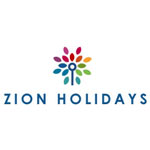
 3D/2N
3D/2N
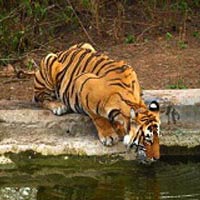 2D/1N
2D/1N
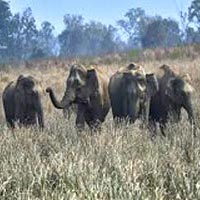 3D/2N
3D/2N
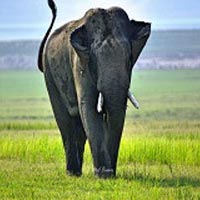 2D/1N
2D/1N
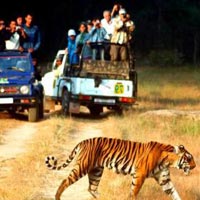 2D/1N
2D/1N
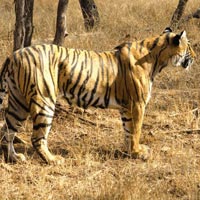 2D/1N
2D/1N
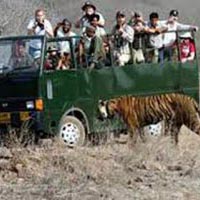 3D/2N
3D/2N
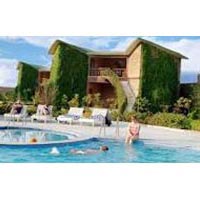 3D/2N
3D/2N
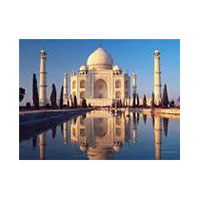 7D/6N
7D/6N
Golden Triangle with Ranthambore Tiger R..
New Delhi - Agra - Jaipur - Sawai Madhopur
 18D/17N
18D/17N
Best of North & West India with Nepal Tour
Mumbai - Kathmandu - New Delhi - Jaipur - Fatehpur Sikri - Agra - Jhansi - Varanasi..
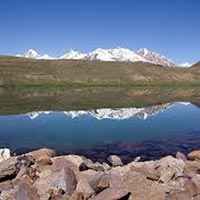 18D/17N
18D/17N
Kalpa - Nako - Sarahan - Lake - Tabo - K..
Kalpa - Tabo - Kaza - Dharamshala - New Delhi - Chandigarh - Mcleodganj
 18D/17N
18D/17N
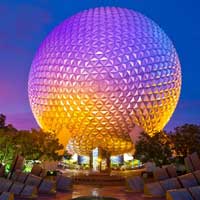 18D/17N
18D/17N
Ultimate USA with Bahamas Cruise Tour
San Francisco - Los Angeles - Las Vegas - Pennsylvania - New York - Orlando - Monte..
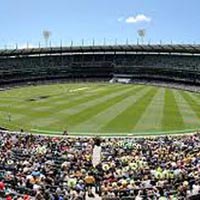 18D/17N
18D/17N
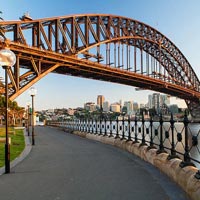 18D/17N
18D/17N
Amazing Australia with Newzealand Tour
Brisbane - Sydney - Rotorua - Christchurch
 18D/17N
18D/17N
 18D/17N
18D/17N
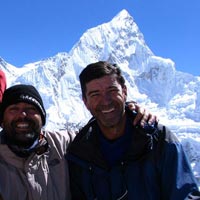 18D/17N
18D/17N
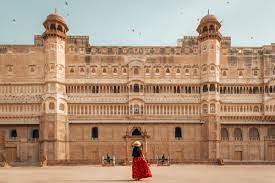 13D/12N
13D/12N
Rajasthan Tour Package 12 Night - 13 Days
Ajmer - Bikaner - Jaipur - Jaisalmer - Jodhpur - Mount Abu - Pushkar - Udaipur
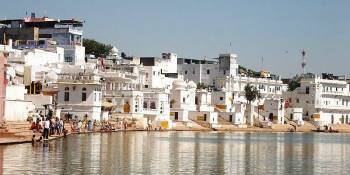 13D/12N
13D/12N
12 Nights Rajasthan Package From Jaipur
Ajmer - Bikaner - Jaipur - Jaisalmer - Jodhpur - Mount Abu - Pushkar - Udaipur
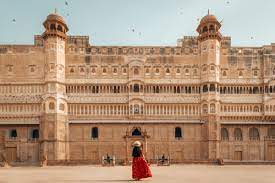 13D/12N
13D/12N
Rajasthan Tour Package 12 Night - 13 Days
Ajmer - Bikaner - Jaipur - Jaisalmer - Jodhpur - Mount Abu - Pushkar - Udaipur
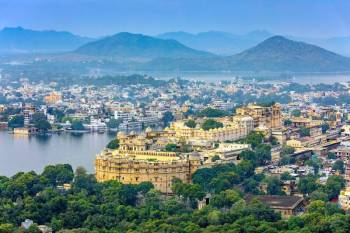 12D/11N
12D/11N
11 Nights 12 Days - Delhi Agra Rajasthan
New Delhi - Mathura - Agra - Jaipur - Ajmer - Pushkar - Udaipur - Mount Abu - Ranak..
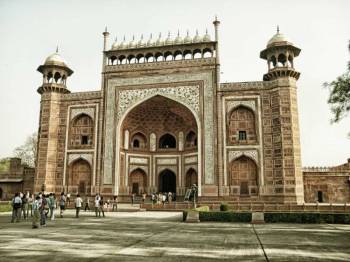 11D/10N
11D/10N
10 Nights Uttar Pradesh Tour Package Fro..
New Delhi - Agra - Prayagraj - Lucknow - Mathura - Varanasi - Ayodhya - Vrindavan -..
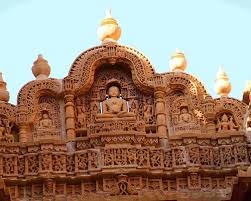 10D/9N
10D/9N
9 Night - 10 Days Rajasthan Tour Package
Ajmer - Jaipur - Jaisalmer - Jodhpur - Mount Abu - Udaipur
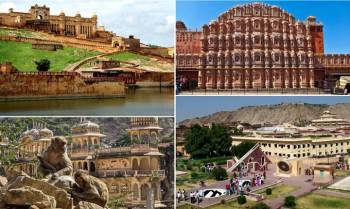 10D/9N
10D/9N
Ajmer - Udaipur - Mount Abu - Jodhpur - ..
Ajmer - Jaisalmer - Jodhpur - Mount Abu - Udaipur - Jaipur
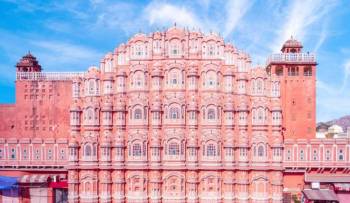 9D/8N
9D/8N
9 Days Jaipur - Ajmer - Udaipur - Mount ..
Ajmer - Jaipur - Jaisalmer - Jodhpur - Mount Abu - Udaipur
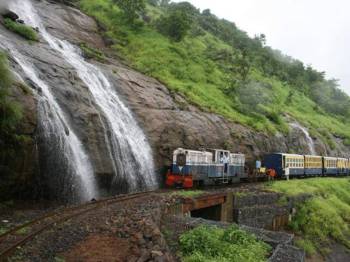 8D/7N
8D/7N